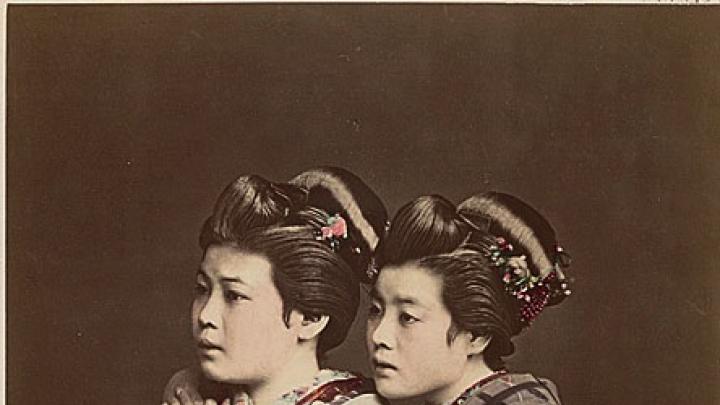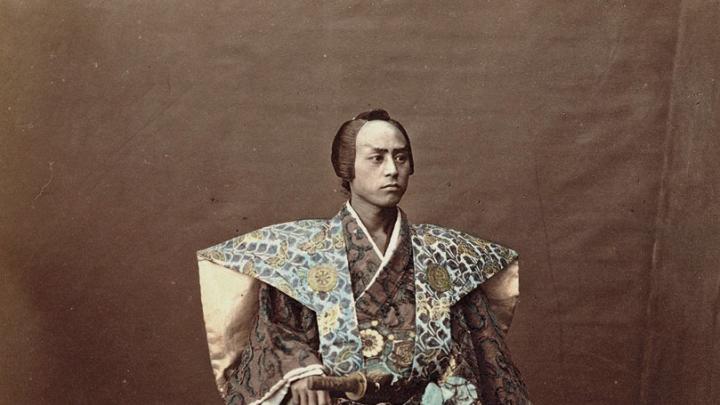Picturing Frederick Douglass, by John Stauffer, professor of English and of African and African American studies, Zoe Trodd, Ph.D. ’09, and Celeste-Marie Bernier (Liveright, $49.95). An “illustrated biography” built around a sumptuous catalog focused on the 160 poses of the man the subtitle calls “the nineteenth century’s most photographed American,” from c. 1841 to a posthumous image of 1895. A fascinating exploration of early photography, as Douglass tried expressions and gestures from “defiant citizen” to “elder statesman,” and wrote about the evolving medium.
How the Internet Became Commercial, by Shane Greenstein, MBA Class of 1957 professor of business administration (Princeton, $35). How is it that a military and academic research tool became a ubiquitous, commercial utility? A deep dive into the engines of privatization and “innovation from the edges”—and the intersection, for remaining doubters, between government-funded basic inquiry and the subsequent growth of enterprise.
Exposed: Desire and Disobedience in the Digital Age, by Bernard E. Harcourt, J.D. ’89, Ph.D. ’00, S.J.D. ’05 (Harvard, $35). A Columbia law professor brings to light just how “exposed” everyone is in the Internet era, and issues a call for “digital resistance” and for “courage and ethical choice…to do everything we can to resist the excesses of our expository society.”
Witches of America, by Alex Mar ’98 (Farrar, Straus and Giroux, $26). The author (Alexandra Marolachakis in her Crimson phase), a writer and filmmaker, proceeded from one of the latter projects to explore and engage in the beliefs and practices of the nature-worshipping, sometimes occult stuff of contemporary witchcraft. “I am not what you would call witchy,” she notes early on—an invitation to forget what you think you know.
How We Live Now, by Bella DePaulo, Ph.D. ’79 (Atria/Simon & Schuster, $26). Tract houses there may be, but a social psychologist documents the increasingly nonnuclear families living within, and explores multigenerational households, housemates, cohousing, singledom, and more.
The Love of God, by Jon D. Levenson, List professor of Jewish studies (Princeton, $29.95). A close interpretation of the core notion of love of God in Judaism’s texts, extending from the legal notion of disparity of power between God and mortals, to personal gratitude for God’s gifts, to the erotic symbolism inherent in this foundational relationship.
This Gulf of Fire, by Mark Molesky, Ph.D. ’00 (Knopf, $35). A young historian, now at Seton Hall, comprehensively reconstructs the earthquake, tsunami, and fire that destroyed Lisbon in 1755—an “apocalypse in the age of science and reason” (as the subtitle puts it) every bit as shattering and consequential in its era as mankind’s more recent experiences in Aceh, Fukushima, and elsewhere.
Houses for a New World: Builders and Buyers in American Suburbs, 1945-1965, by Barbara Miller Lane, Ph.D. ’62 (Princeton, $49.95). The Bryn Mawr historian emerita examines the 20 years during which homebuyers and merchant builders transformed house types, suburban tracts, and their wider communities—to the tune of 13 million ranches, split-levels, etc., accommodating more than one-fifth of the population by the 1970 census.
Ametora: How Japan Saved American Style, by W. David Marx ’01 (Basic Books, $26.99). A cultural history touching on such revealing moments as how rebellious Japanese youths adopted the classical American traditional (ametora) style. Cameras and television sets may go out of fashion, but Japanese fashion icons like Uniqlo have come to dominate the world, in part by sustaining made-in-America statements about clothing.
The Journey of “A Good Type,” by David Odo (Peabody Museum/Harvard, $45). In an entirely different vein, Odo—a Harvard Art Museums curator and anthropology lecturer—examines the Peabody’s holdings of ninetheenth-century photographs of Japan. His arguments about museum collections and anthropology aside, casual viewers will be struck by the preindustrial views of Mount Fuji, the samurai armor and imperial court costumes, chair-bearing porters, and pensive girls—as if from a different, yet familiar, universe.
Database of Dreams: The Lost Quest to Catalog Humanity, by Rebecca Lemov, associate professor of the history of science (Yale, $35). A young historian of social science—whose teaching examines such subjects as brainwashing and coercive interrogation—examines a pioneering 1950s Harvard-anchored attempt to catalog dreams and other “soft” human experiences, anticipating contemporary databases and “big data” research.
The Secret of Our Success, by Joseph Henrich, professor of human evolutionary biology (Princeton, $29.95). A newly arrived Harvard faculty member (in a relatively new department) comprehensively examines how humans—relatively vulnerable as individuals—succeed. The subtitle of his inquiry, “How Culture Is Driving Human Evolution, Domesticating Our Species, and Making Us Smarter,” suggests the breadth of his work on collective intelligence—so be kind to admirable analogs like bees and ants you may encounter.
Breaking Ground, by Lucretia Hoover Giese, Ph.D. ’85, and Henry B. Hoover Jr. (University Press of New England, $45 paper). A beautiful catalog and analysis of the striking, iconic modernist homes designed by Henry B. Hoover, M.Arch. ’26—many of them in Harvard bedroom communities that became important residential centers for faculty members during the mid-century academic and suburban boom (see “The Modern Revolution,” May-June, page 16G).












